This week, we're investigating the Millennium Prize Problems - a set of mathematical equations that, if solved, will not only nab the lucky winner a million, but also revolutionise the world. Plus, the headlines from the world of science and technology, including why screams are so alarming, how fat fish help the human fight against flab, and what's the future of money?
In this episode

00:59 - Preventing heart attacks with toothpaste
Preventing heart attacks with toothpaste
with Dr James Rudd, University of Cambridge
Heart disease: It's the biggest killer in the world - in 2012 alone, it claimed the lives  of 17.5 million people around the globe. But, new research shows how we might be able to save many of those lives with an ingredient found in toothpaste! Around 75% of all heart disease involves hardening and clogging of the arteries, by fatty lumps known as plaques. As bits of these plaques fall off, they can block crucial blood vessels in the heart, leading to a heart attack. But using a radioactive form of sodium fluoride - the decay-fighting ingredient found in toothpaste - Cambridge's James Rudd has developed a technique to screen arteries for these dangerous 'hardened hotspots,' as he explained to Kat Arney...
of 17.5 million people around the globe. But, new research shows how we might be able to save many of those lives with an ingredient found in toothpaste! Around 75% of all heart disease involves hardening and clogging of the arteries, by fatty lumps known as plaques. As bits of these plaques fall off, they can block crucial blood vessels in the heart, leading to a heart attack. But using a radioactive form of sodium fluoride - the decay-fighting ingredient found in toothpaste - Cambridge's James Rudd has developed a technique to screen arteries for these dangerous 'hardened hotspots,' as he explained to Kat Arney...
James - So, we know from studies over the last 20 or 30 years that hardening of the arteries happens unfortunately as you get older. We also know that cholesterol is important. Increasingly, we think that little bits of calcium also build up in the wall of the arteries. Existing techniques to try and predict people who are going to have heart attacks and strokes often involve putting needles in arteries and in arms, and feeding wires around inside the heart. So we developed a technique working with colleagues in Edinburgh University to, as you say, target the areas of calcium within the arteries, actually just lying on a standard PET CT scanner without having to have nasty needles put inside the body.
Kat - So, this is the kind of scanner we use this for detecting things like cancer, for looking inside the body. So, how does your scan work to look for the science of heart disease for these plaques?
James - So, what it involves is a very small injection of radioactive sodium fluoride - as you say, a major ingredient in toothpaste.
Kat - But this isn't toothpaste. You're not injecting toothpaste to people.
James - It's not toothpaste. It's about 10 mils of a colourless liquid. The chemical itself is very safe. As you say, it's found in toothpaste. There's a small dose of radiation which is attached to it so we can spot it on the scanner. It's about the same as a CAT scan of the head. It's injected into the patient and it actually binds very tightly to areas of the arteries where this calcium process is continuing. We think that those patients with the most uptake of the sodium fluoride on the scan are at great risk of heart attacks and strokes in the future.
Kat - So, what's special about sodium fluoride that makes it go to these calcium rich plaques?
James - The chemistry actually is very similar to that in toothpaste. The reason we use fluoride in toothpaste is that it binds very tightly to calcium and stops decay happening. We think the same thing is happening in the coronary arteries and the arteries in the neck. So, the sodium fluoride is binding very, very tightly and it's being washed off the rest of the arteries where there isn't any problem. So, we're left just with those areas that we think are at high risk of rupturing and causing heart attacks and strokes.
Kat - If you can spot these, how do you know that these are definitely going to be people that are at risk and also then, what could you do about it because it's all very well to put someone on the scanner and go, "Oh dear! Sorry, don't book a holiday..."
James - As always, there's more work to be done. We have validated with pathology specimens and we've found that there's a relationship between them. We're also hoping that we can use some new drugs that are being developed over the next couple of years called PCSK9 inhibitors which are very, very expensive drugs. We think that a scan like this might help doctors to select patients who really will respond to the treatment and also, avoid giving the treatment to people who are not likely to benefit.
Kat - At the moment, do you know if someone who would be picked up with these kind of scans and say, "Those do look dodgy" are they definitely going to have a heart attack or what needs to be done further to prove the kind of link between picking someone up on this scan and their future risk?
James - Our initial studies have been in about 100 patients. We need to, and in fact we're actually undertaking British Heart Foundation and Wellcome Trust funded studies in patients in the thousands and following them for multiple years, just to see whether those with the highest concentration of fluoride in the arteries at baseline go on to have heart attacks or strokes or not.
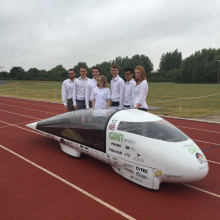
05:19 - Racing solar powered cars
Racing solar powered cars
with Graeham Douglas, Simon Schofield and Amy Livingston, CUER
In the last seven days, the Cambridge University Eco Racing team unveiled their solar  powered car, Evolution. This is ahead of the World Solar Challenge in Australia - a gutsy 3000 km road race across the desert. Admittedly, a soaking wet athletics track couldn't be further away from the blazing temperatures of the Australian Outback, but last Monday, Graihagh Jackson gathered with Graeham Douglas and the team to feast her eyes on Evolution, to see if it would work (come rain or shine) and with the hope of giving it a test drive herself...
powered car, Evolution. This is ahead of the World Solar Challenge in Australia - a gutsy 3000 km road race across the desert. Admittedly, a soaking wet athletics track couldn't be further away from the blazing temperatures of the Australian Outback, but last Monday, Graihagh Jackson gathered with Graeham Douglas and the team to feast her eyes on Evolution, to see if it would work (come rain or shine) and with the hope of giving it a test drive herself...
Graeham - The race is the World Solar Challenge. Every 2 years, teams from all over the world go to Australia and do a race, 3,000 kilometres from the north in Darwin to the south in Adelaide. There's about 40 teams that start at the beginning. Usually, between a quarter and a third finish at the end and it takes about 4 days entirely in solar power.
Graihagh - Entirely in solar power. So surely, that gives you a number of obstacles to overcome from the get-go.
Graeham - Yeah, absolutely. Our solar array gives you less power than you get in a hair dryer and we use it to propel our car with the driver in it at highway speeds. So there's a lot of challenges on the engineering side.
Graihagh - Now, your car was ended in 2013 for the last race but it didn't quite make it even to the start line. What happened?
Graeham - Yeah. We had a major disappointment last year unfortunately. Just suiting up to the race, we had some stability problems and we ended up having a little crash. Unfortunately, we had to withdraw from the race.
Graihagh - It's very disappointing. And what's been done this year to overcome those stability issues?
Graeham - So, we've lowered the weight of the car close to the ground, made it a bit wider and changed the dynamics of the car, so how the car is steered to keep it upright.
Graihagh - So, you're feeling much more confident this year then.
Graeham - Yeah, definitely. I think we've learned a lot from our last car and I have great expectations for this car.
Female - The moment has come everyone. Here's our driver, Amy.
Amy - Yup, thank you.
Graihagh - As Amy and the solar-powered car, Evolution squeaked off down the race track, I found myself scrabbling to describe it. Its shape is rather futuristic. I could only liken it to a white helicopter without the propeller or the landing pads, that got stuck in some sort of time warp and the back end got super stretched. Simon Schofield, technical manager of the car thought it looked more like a teardrop/toothpaste tube. Toothpaste aside though, I was keen to understand why Simon and the team were feeling so confident especially since it had clouded over and begun to rain.
Simon - One of the things that Cambridge University is very good at is being very innovative in the way that we design our cars. Most of the other teams have a very different design that looks more like what's called a table top design which means it's a large flat set of panels that face the sky and then there's a part that the driver sits in the middle of the car. So, our decision to go for something that's much more aerodynamic but has a smaller solar array is something that no other team has tried up to this point and is still quite an untested concept. So, we're very interested to see how it turns out in Australia.
Graihagh - The solar panels to me aren't very big. I'm thinking about the solar panels we get next to a swimming pool. There's loads of them and even then the swimming pools are not that warm. You've got maybe 2 meters by half a meter worth of solar panel there. How are they so efficient?
Simon - So, the solar cells are gallium arsenide cells. Gallium arsenide is a very good semiconductor to use for solar cells because it's a direct band gap semiconductor. That means that rather than needing phonons as well as photons in order to absorb light, you only need the photons and that means that more of the photons that hit the solar cells will actually be converted into electrons, turns into energy which allows you to power the battery.
Graihagh - And I notice you've got a covering which is perfect because on a day like today, it's raining. I imagine you won't get as much rain in the outback. Does that not block some of the photons getting through?
Simon - So, the canopy is about 95 per cent transmissive which does mean that we lose about 5 per cent. But the benefit of having it there is that it actually keeps the aerodynamics of the car extremely good.
Graihagh - It must be true because Evolution can cruise at 110 kilometres per hour on just solar power. And guess what, the electrical output is something similar to what you power your hair dryer with. How do they do this? Well, for starters, it's super light and their drivers are also super small as I found out at 5 foot 11 - much to my disappointment. Amy Livingston, test driver of Evolution...
Amy - It is very small. I'm 5 foot 3. It's about the right size for me.
Graihagh - We're standing in front of the car and I can just see a mass of wires and a removable steering wheel I notice, which you have to take on and off to get in and out of the car. What's it like to drive?
Amy - It's quite different to driving a normal car. Accelerator and breaking on the steering wheel and then an emerging foot break on the floor.
Graihagh - So, it hasn't got gears then. It's not like driving your regular manual car.
Amy - No. Definitely, not. The power is direct to the motor so you just pull a trigger basically and it goes.
Graihagh - And how are you feeling about the race in October?
Amy - Feeling confident that we'll finish and do better than previously. I don't want to jinx it.
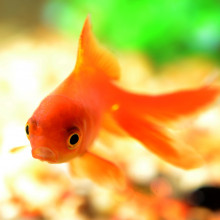
10:49 - Fat fish may help us lose weight
Fat fish may help us lose weight
with Dr Ariel Aspiras, Harvard University
Over 60% of the UK population are classed as overweight or obese, which carries an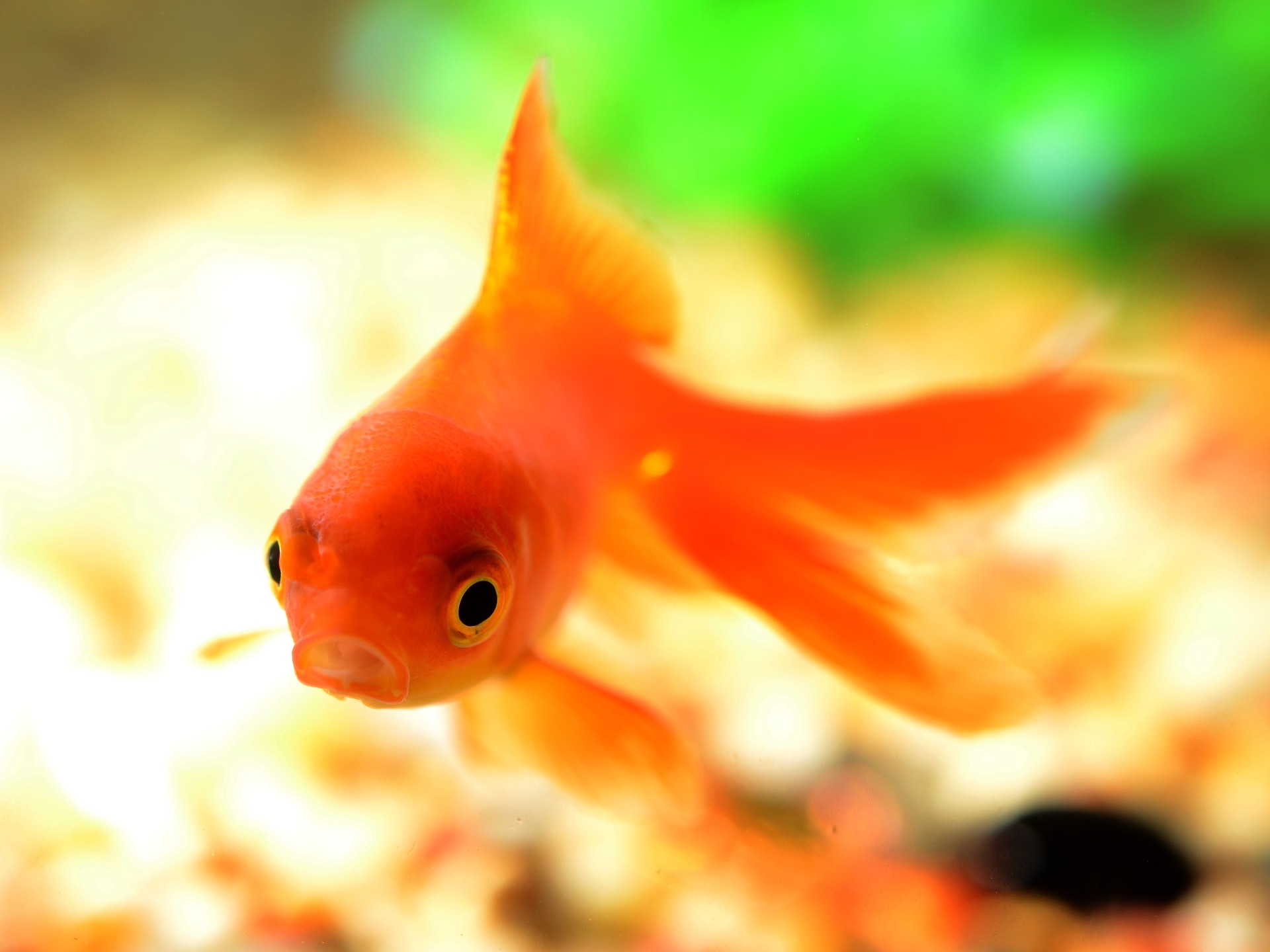 increased risk of many health conditions from diabetes to cancer. But it's not just humans that can get a little plump. By studying the genes of some chubby fish from Mexico, Harvard's Ariel Aspiras found our fat fishy friends were actually very healthy and suffered none of the ill effects that overweight humans do. What makes these fish so special? How do they get so fat yet stay healthy? And what can we learn from them when it comes to fighting the flab? Amy Goodfellow swam across the pond to find out more...
increased risk of many health conditions from diabetes to cancer. But it's not just humans that can get a little plump. By studying the genes of some chubby fish from Mexico, Harvard's Ariel Aspiras found our fat fishy friends were actually very healthy and suffered none of the ill effects that overweight humans do. What makes these fish so special? How do they get so fat yet stay healthy? And what can we learn from them when it comes to fighting the flab? Amy Goodfellow swam across the pond to find out more...
Ariel - I was really curious as to why some people can eat a lot of food and not gain weight, and why other people can eat very little food and gain a lot of weight. And so, these inherent differences in metabolism are not really well-understood. We were interested in looking for population differences, in metabolism between this species, the Mexican cavefish. There's a subset of the population that lives in the caves and then there's a surface population and they're both the same species. So, when we started this experiment, we thought this would be a great system.
Amy - These fish are the same species but the cavefish have evolved slightly differently. The cave dweller is a bit of a fatty compared to the surface counterpart. This makes them great to study because you can find out which genes cause which traits.
Ariel - We found a few metabolic differences. One of them was their starvation resistance - their ability to just lose less weight when they're fasting. Another is just their general adiposity - how fat they are in general. And then the third type was this hyperphagia phenotype or overeating. They kind of tend to binge eat relative to the surface fish.
Amy - The cavefish are fatter and have slower metabolisms, so don't lose weight as quickly as the surface fish. They also have this remarkable ability to binge eat - sounds pretty similar to me! But given they're the same species, why are they so different?
Ariel - It's because of their environment. Throughout the year, they're kind of starving for the most part and then one time of the year, when there's flooding and there's food getting washed in, there's a lot of food available. And so, they kind of just have to gorge on food. And so, they've evolved to take advantage of that by binge eating and not stopping when they're full. Whereas the surface fish, if they do that, they get a lot fatter and then they become more of a target with predators whereas these cavefish, they don't have any predators.
Amy - I have a great image in my mind of these really fat fish swimming around in these caves. But are these fish actually unhealthy because of this large amount of fat or do they cope well with this?
Ariel - In our lab, these fish are pretty healthy. They live for 10 years. So did the surface fish. We've looked at some blood parameters to test whether or not they have liver damage or other complications associated with being really fat and they appear to be fine.
Amy - What's key here is that these fish have one vital alteration in their genome - a gene called MC4R and guess what, this mutation is also found in humans.
Ariel - There's a lot of humans that have mutations in this gene and are obese. So, it's associated with obesity. And when you knockout this gene - so 'knockout' means takeaway or you don't have a copy of this gene. You get really, really fat and it happens not just in humans but in mice and other animals as well. And so, this is a really good candidate gene to explain some of the differences in this overeating phenotype we see.
Amy - Does your research have any applications for humans and obesity?
Ariel - With this particular gene, no. This is more of an initial pass at trying to identify genes that are involved. This is kind of a good proof of principle given that we identified this gene that's different between these two populations and this gene is also different in a lot of obese humans. It is promising though because it does tell us that we keep looking at these metabolic differences between this fish. We could potentially identify other genes that are novel that could be contributing to both their differences in fat content, but also to their difference in their ability to tolerate extreme differences in their adiposity.
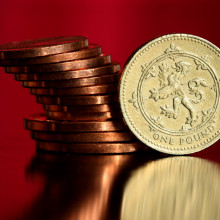
15:15 - What's the future of money?
What's the future of money?
with Peter Cowley, tech investor
This month, technology giant Apple have launched an all new 'digital wallet' - called 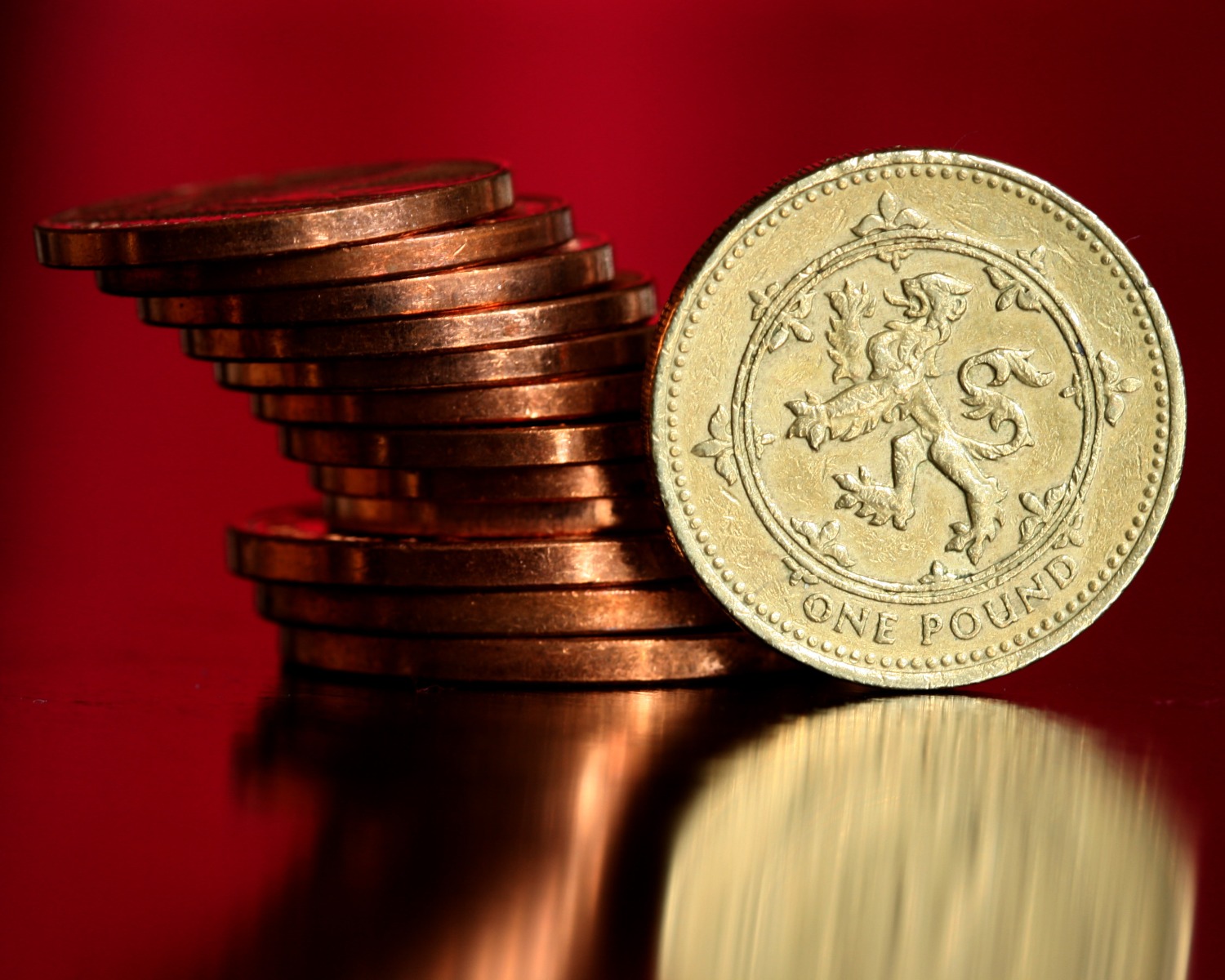 Apple Pay - where you can now pay for your groceries using your iPhone! But Apple isn't the only tech firm changing how we manage our money... From TransferWise to BitCoin, we're having moving to a cashless and increasingly globalised world of banking. What does this mean though for us end-users? Technology entrepreneur Peter Cowley spoke to Graihagh Jackson about the value of virtual money...
Apple Pay - where you can now pay for your groceries using your iPhone! But Apple isn't the only tech firm changing how we manage our money... From TransferWise to BitCoin, we're having moving to a cashless and increasingly globalised world of banking. What does this mean though for us end-users? Technology entrepreneur Peter Cowley spoke to Graihagh Jackson about the value of virtual money...
Peter - Apple Pay is not the only system on the market. Google have also had something for about 3 years. Many of the listeners will have credit cards and debit cards. Some of which, the more modern ones have got these 4 ARCs on them which is a distance spending. So, you can just wave the card past the reader and pay. Apple have just built it into the phone, in the same way that Google have done. But Apple have added to that the fact that you also need simultaneously to have your finger, thumb or whatever on the reader, on the more modern phones so they're acting as another level of security.
Graihagh - And that's why it's better than current methods in that you have to type in your chip and pin or actually, I could give you my card or you might pinch my card and then swipe and do that.
Peter - Absolutely. Yes, so it's much more secure. Not just that. There's also a tech element behind this as well to do with the way that the Apple phone talks to the reader.
Graihagh - How does it talk to the reader?
Peter - It talks to the reader by combining the card, the phone, and your fingerprint together and give us a one-off code that goes to the reader that even if that's intercepted, that still will not be reusable whereas a normal phone, for a normal card, if you swipe it waving the card over, all it's doing is passing and crosses the card number. So, it's very much more secure.
Graihagh - I see and you mentioned Android had already launched or Google already launched their similar technique but why hasn't it launched? It's not something I've really heard of before.
Peter - Yeah. That's because it's not got across the UK. That's the big difference. So, it's probably bigger in the States. The reason that you haven't heard about it is purely because it hasn't got here ye t.
Graihagh - Possibly also because I'm an avid Apple user as well. You talked a little bit about the security and payment angle here and you've got your fingerprint ID. But surely, there's lots of other ways that we could be authorising payments.
Peter - Yes, there are all kinds of other different ways. We're talking about facial recognition, talking about voice recognition even. The French system for instance use a - they send you a text. There are other biometric processes that could be used. Also, retina scanning might be possible with a mobile phone.
Graihagh - This is all sounding very futuristic. I have heard of something called 'smile to pay' though. This sounds very intriguing. Does that mean I just smile and I just instantaneously pay for my sandwich at Pret, I don't know?
Peter - And if you don't smile, you don't get your sandwich. Is that what you mean?
Graihagh - Precisely.
Peter - No, I suspect that's facial recognition and it just happens with a smile, maybe they're recognising that. But the cause of problem there is if you lend your phone to Kat. Does a Kat then - her smile will allow her to pay for the sandwich or not?
Graihagh - Can I trust you, Kat?
Kat - Absolutely not.
Graihagh - What's the future here? Can I expect a world where I can just carry on my phone, I don't need any cash? Is that the future of money?
Peter - Possibly, but I would suspect it would be our grandchildren rather than your children who will get to the point where there's no cash. There's a whole stack of upsides and downsides a move away from cash. One of the problems with cash of course, it can be stolen. So, that crime would be removed if we didn't have any cash, but instead, there'd be a whole stack of cybercrime in there. It also costs a huge amount of money to print it tomove it, to store it etc. If there was no cash then of course, we've all got to - a. we've got to have a mobile device and something like 5 percent of all Americans don't even have a bank account. We need to be able to trust the systems. We've got to have something that is not going to fail. What happens if the battery goes flat? There's a problem on the tube at the moment. If you go in with your mobile phone and the battery goes flat, you can't get off the tube apparently.
Graihagh - Oh dear! Without paying a hefty fine, I imagine.
Peter - Exactly. As if you were there on the tube all day.
Graihagh - But you wouldn't have the cash to pay.
Peter - Exactly, so you're locked up.
Graihagh - Problem solved.
Peter - Exactly.
Graihagh - Okay, so that's in terms of cashless, but what about a more globalised currency? Is there somewhere that... and then there's bitcoin.
Peter - Bitcoin, exactly. Bitcoin is a very complex, very, very techy application, something called blockchain technology and it is being used. It's being use incorrectly as well. It's not just being used, but there are for instance about 6 to 7 outlets including coffee shops here in Cambridge where you can pay with Bitcoin. The Greeks were starting to use Bitcoin because currency sort of disappeared for a couple of weeks recently. So, yeah Bitcoin will be used more and more, but whether it will ever become a global currency, I have no clue.

19:54 - Why are screams so chilling?
Why are screams so chilling?
with Professor David Poeppel, New York University
Screams are one of the most fundamental of human noises, something we're all  programmed to do right from the second we're born, no matter what culture we're part of. Yet, until now, no-one has ever thought to investigate what it is that makes a scream so alarming. Could it be the sheer volume? The high pitch? Now scientists have discovered a scream-specific signal the brain is sensitive to. James Farr spoke to discoverer David Poeppel to hear what it is...
programmed to do right from the second we're born, no matter what culture we're part of. Yet, until now, no-one has ever thought to investigate what it is that makes a scream so alarming. Could it be the sheer volume? The high pitch? Now scientists have discovered a scream-specific signal the brain is sensitive to. James Farr spoke to discoverer David Poeppel to hear what it is...
David - What we found is that screams occupy a very reserved niche of the acoustic soundscape of all the possible sounds you might entertain or generate. So, it's not just that it's speech that's very loud or song that's very loud or something like that; it's actually reserved, it has a special acoustic quality which has a weird technical definition that's actually called 'roughness'. And 'roughness' is actually the rate of modulation of the sound's loudness if you will.
James - That makes sense really. What makes us jump to attention is how quickly the sound goes from loud to quiet and back to loud again. If it does this once per second, then we say that the volume modulates at a rate of 1 hertz. So, how rough is say, normal human speech and how does this compare to the rate of modulation in a scream?
David - If you just measured or recorded our conversation right now, that turns out to be between 4 and 5 hertz - cross linguistically by the way whether I'm doing an analysis of mandarin Chinese or of German or of English. Now, if you take a sound and you modulate its amplitude much, much more rapidly like 30 to 150 hertz as what we found in our measurements, that's what gives it this quality of roughness. The more of that roughness modulation a sound has, the more screamy it sounds and the more scary you rate it in fact.
James - Now we know the key property of the scream itself but how can we find out if human screams are the only sound that has this effect on us? By measuring the local activity in all the different regions of the brain using an MRI scanner, you can see that the more rough a sound is, the more an area called the amygdala, aka 'the emotional hub' of the brain, becomes activated. You can then measure the roughness of a whole host of different sounds and predict exactly which ones will have you jumping out of your seat, just like a scream would.
David - It turns out that no other auditory signals really have this particular modulation with one crucial exception. And that turns out to be other alarm sounds. So, if you look at car alarms, police sirens, irritating alarm clocks, these are the kind of auditory signals that also have this roughness modulation. So it's interesting and it means that sound designers who make this kind of stimuli by trial and error in some sense, happened upon exactly this kind of sound quality. And that's because it's very salient and very attention grabbing. So, they're just super effective at getting you to be afraid, runaway, scream bloody murder, and what have you.
(Alarm recording)
James - Just checking you haven't switched off there. It's all very well and good, this new knowledge, but what exactly is the relevance of it?
David - We can take any old signal like me saying some not fantastically interesting sentence to you and I can modulate it in that way and make it sound like a scream.
James - It would be absolutely criminal if I didn't give this a go. Let's take the everyday sound of a yawn...and see what we can do.
That should do it. Hold on to your seats everyone...
Wow! I don't know about you, but I'm truly quaking in my boots. Still, I don't quite get what I can achieve with this though - other than using it in the next Naked Scientists Halloween Special of course.
David - Now, that means of course you can use it to make more effectively tuned alarm signals, more specific sounds, sirens, but you can also of course use it for all kinds of entertainment fun. You could make scarier movies, you can optimise this stuff by correlating it with other visual information and so on.
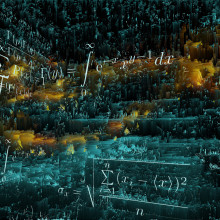
24:46 - Solve this and you'll win $1 million...
Solve this and you'll win $1 million...
with Tom Crawford, University of Cambridge
The Millennium Prize Problems are a set of 7 maths problems that have been deemed 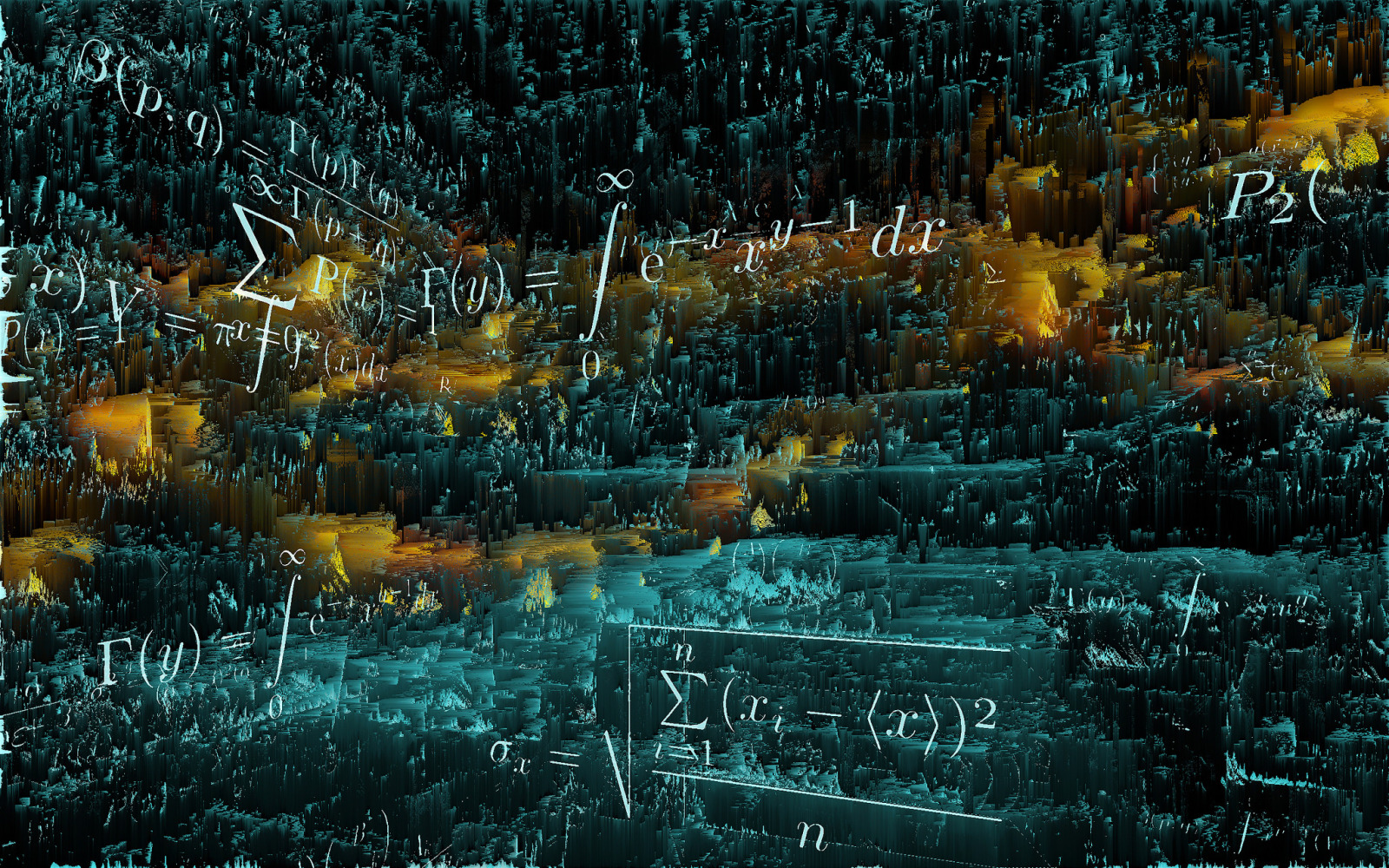 so important that if you can solve any of them, you'll be awarded 1 million Dollars. Graihagh Jackson spoke to Cambridge University's Tom Crawford to find out what these problems are...
so important that if you can solve any of them, you'll be awarded 1 million Dollars. Graihagh Jackson spoke to Cambridge University's Tom Crawford to find out what these problems are...
Tom - So, yeah. These are sort of a second reincarnation of the idea of important maths problems. So, in the year 1900, there was a mathematician called Hilbert who actually came up with 23 problems that he considered to be the most important in the year 1900. In fact, one of these is actually one of the millennium problems as well. And then the year 2000 came around, it's a big event, lots of things happened, and maths thought, "Let's get involved with this."
Graihagh - Jump on the bandwagon.
Tom - Exactly. They sort of sat down and said, "Right. These are the biggest unsolved problems in mathematics at this time.
Graihagh - Did they say 7 because 7 is a prime number and an interesting maths number?
Tom - I'm not sure exactly why they chose 7, but that sounds like a good idea to me.
Graihagh - And you say 'they', these mathematicians, who are they and I assume, they're the ones fitting the bill of a million dollars, right?
Tom - Yes. So, this is the Clay Institute. It's an institute based in America. They had money left to them and thought, "Let's use this as prize money as a sort of extra motivation." But if you ask most mathematicians - I won't say all - if you ask most mathematicians, they wouldn't actually try and tackle these problems for the money. It's more just for the fun of doing the maths in some sense.
Graihagh - So, can you give me a quick rundown of the final 7.
Tom - I'll start with the one I'm doing my PhD on, this is the Navier-Stokes equations. This is fluid dynamics. This is a set of equations that model the flow of every fluid - so water, air, anything. Then we've got the Mass Gap Hypothesis. You can think of this one as asking the question "why do things have mass?"
Graihagh - Sounds interesting. So, you've mentioned 2 of them there. There's 4 more by my count, by my math.
Tom - 5
Graihagh - 5? Oh no! Okay, what are the other 5?
Tom - We've got the Poincare Conjecture which is an interesting one as we'll find out later. We've got the Riemann Hypothesis which looks at prime numbers. We have P versus NP - one of the more famous ones. So, this is basically looking at how computers work. And then the last two are quite abstract. So, you have the Birch and Swinnerton-Dyer Conjecture.
Graihagh - Wow! Great names.
Tom - And then finally, the Hodge Conjecture. So, the Hodge Conjecture is quite an interesting one because depending on which expert in the field you ask about this problem, they will give you a different definition of what this problem is.
Graihagh - So, no one can agree what the actual problem is in the first place?
Tom - Yeah. That's how complex some of these problems are.
Graihagh - Wow! So, how are we ever going to go about solving them if we can't even agree what they are in the first place?
Tom - Well, I mean some of them are a bit more approachable and there's a bit more general consensus about what this problem is. But I think the main idea of these problems it's not necessarily getting a solution, it's understanding more. So, by trying to conquer this giant mountain of a problem, you'll scale smaller peaks along the way and make new advances in other areas of maths.
Graihagh - A million pounds sounds like an awful lot, but I suppose if you spend your entire life doing this then actually, it's not that much.
Tom - No. Sort of estimates of the amount of time it would take to solve one of these problems, it actually works out as being paid below minimum wage for the amount of time you would need to spend to solve one of these problems.
Graihagh - Wow! We've got some very dedicated mathematicians out there.
Tom - Yeah, most mathematicians I think actually do it for fun, if you can believe that.
Graihagh - I'm just thinking about my maths class back when I was 16 and maths certainly wasn't my favourite subject but maybe I should revisit that.
Tom - Yes, sounds good.
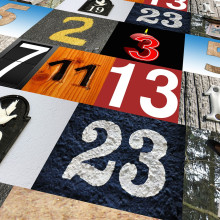
29:14 - Prime numbers: Decoding the DNA of maths
Prime numbers: Decoding the DNA of maths
with Professor Marcus Du Sautoy, University of Oxford
One of the leading Millennium Maths problems is 'the Riemann Hypothesis.' This problem relates to the Riemann Zeta function - a very complicated mathematical expression - but understanding it will tell us a lot more about prime numbers and how they are distributed. World famous mathematician Marcus du Sautoy, from Oxford University, joins Kat Arney to unpick the primes...
Marcus - Riemann was one of the greatest mathematicians of the 19th century in Germany. He was at one of the great hotbeds of mathematics Göttingen University, was a student of Carl Friedrich Gauss. He was also responsible for coming up with some of the mathematics that Einstein used in order to create relativity, the invention and discovery of dimensions of geometry beyond our 3-dimensional universe.
But the Riemann Hypothesis is great discovery about what we think is actually at the heart of making the primes tick. Interestingly, he discovered it in 1859, which is the same year as Charles Darwin's publication of the Origin of Species. I think you can call this really the origin of the primes. We think that what he discovered is telling us all about prime numbers.
But it's still something of a mystery. So, the Riemann Hypothesis, let me tell you what you've got to solve. You've to prove that the non-trivial zeros of the Riemann Zeta Function, that the real part of them all have a or are equal a half.
Kat - Hang on! So, I think that's maybe more maths than I can cope with right now. So, let's start with some simple stuff about what are the prime numbers about?
Marcus - A prime number probably you remember from school or maybe you're still at school. It's a number which is indivisible. You can't divide it by anything other than itself and one. So, it's something like 17 - the number I've played for on my football team - that's a prime number but 15 isn't because you're going to write that as 3 times 5.
Kat - Is there a pattern to how these prime numbers are distributed? We've got 3, 5, 7, 11, 13 and then it starts to get more spread out. Can we actually predict where they're going to be or is this random?
Marcus - Well, exactly. So, mathematics, I tend to think of, it's the science of patterns. That's what this is all about. These numbers, they're really the atoms of mathematics because you can build all other numbers by multiplying these primes together. But when you look at the list of them, 2, 3, 5, 7, 11, 13, and you count higher and higher, one of the first great theorems of the ancient Greeks was that they're in infinitely many of them. But then if they're meant to be many, we've got to try and find a pattern for this.
The chemists, they've got a periodic table which they just list all of their atoms but for the mathematicians, these prime numbers, the challenge is, there doesn't seem to be any patterns of these numbers which are the most fundamental in the whole of mathematics. So, that's the challenge.
It's really a 2000-year-old problem rather than a 150-year-old problem. But 150 years ago, Riemann actually understood that although outwardly they look very random, there's something hiding behind there called the Zeros of the Riemann Zeta Function which do have some pattern to them. And that's what you got to prove - a pattern about this kind of like the DNA which makes these numbers work.
Kat - So, how would someone go about proving this and then what could the payoff be? Why would it help if we could actually spot this underlying pattern and prove this to be true?
Marcus - If I knew the answer to your first problem, I wouldn't be here now. I'd be claiming my million dollars. So, that's one of the challenges that with these grey unsolved problems, how on earth do you go about solving them? Riemann actually stumbled on his new way of looking at the primes almost by chance. It's about playing and experimenting, trying to find connections with other things.
So, how are we going to do it? I don't know. Frankly, I'd pay a million dollars to solve this one. It's so important.
Why it will be important for people who perhaps or what's maths got to do with me? Actually, the prime numbers are absolutely essential now in all the codes that are used on the internet to send things securely. So every time you ever sent your credit card across the internet and want it to be kept secure, actually, you're using the fact that we don't understand the primes well enough to keep that secure. The code we use is prime numbers that are being code to things so it can't be read. If we understood the Riemann Hypothesis, potentially, the deeper understanding we'd have of primes would give us a way perhaps to crack these codes.
Kat - That sounds kind of risky to me though if all these information has been sent using prime numbers.
Marcus - Yes and potentially it is, but at the moment, the codes are very robust. But in a sense, it is tapping into the fact that we don't understand numbers. Here's a challenge - if I give you a number like 15, what are the primes which made that number?
Well, that's easy. It's 3 times 5. But if I give you a 200-digit number, which is the numbers used on the internet, to crack any website's cryptography, there's a public 200-digit number, you got to find the two primes which multiply together, give that number. So, if you can do that, it's kind of like a prime number spectrometer then you'll be able to crack all the codes on the internet.
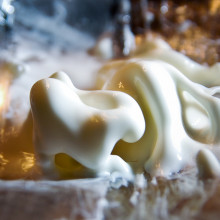
34:56 - Navier Stokes: equation to rule them all
Navier Stokes: equation to rule them all
with Professor Keith Moffatt, University of Cambridge
A leading Millenium Prize Problem is the Navier-Stokes 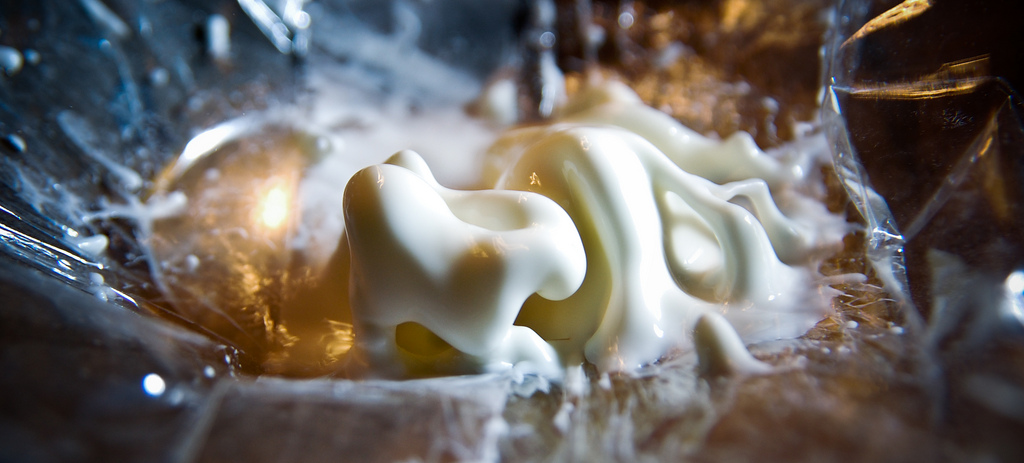 equation, which, if solved, could model the flow of any fluid - that means how airplanes navigate the skies, how water meanders in a river and how the flow of blood courses through your blood vessels... Understanding these equations in more detail will lead to scientific advances in all of these fields: better aircraft design, improved flood defences, and better drug delivery in the body. Fluids expert and mathematician Keith Moffatt took Tom Crawford down to the deep dark depths of Cambridge's maths lab...
equation, which, if solved, could model the flow of any fluid - that means how airplanes navigate the skies, how water meanders in a river and how the flow of blood courses through your blood vessels... Understanding these equations in more detail will lead to scientific advances in all of these fields: better aircraft design, improved flood defences, and better drug delivery in the body. Fluids expert and mathematician Keith Moffatt took Tom Crawford down to the deep dark depths of Cambridge's maths lab...
Tom - We've just gone underground and we're stood outside a lab called the Goldstein Lab. It kind of reminds of a secret lair of either a superhero or maybe a super-villain. There are all kinds of complicated looking devices, cameras everywhere, all kinds of equipment and wires coming out of things. So these equations, the Navier-Stokes equations, they are a set of mathematical equations that model the flow of any fluid. That could be air, water, even blood in the body perhaps?
Keith - Yes, that is correct. For the vast majority of fluids particularly air and water, the equations are based on Newton's Laws, so they're very classical. They were first written down in the 19th century and they're highly mathematical in structure.
Tom - So, if we have these equations that model the flow of all of these different kinds of fluids then why is this a millennium problem?
Keith - It is an unsolved problem although many people have tried. There's question of whether solutions of the famous Navier-Stokes equations can or cannot become infinite. You might say it's a problem that you might throw the computer at. We've got extremely powerful computers nowadays, but a computer can never tell you whether a solution actually is going to infinity. A computer programme will always break down before the singularity is reached.
Tom - When I think of singularities, I'm thinking of the Big Bang or a black hole in space. What exactly do you mean by singularity here?
Keith - Well, singularity in general means that you have a system of equations in which one of the variables, any one, may go to infinity.
Tom - Do we have any examples with fluids that exhibit this singularity behaviour?
Keith - The singularity may occur most simply through a consideration of the problem of two tornado-like vortices. If these are forced together, then they go through a process of what's called "Vortex Reconnection". It's a very complex process because each vortex tries to wind around the other. The spatial structure becomes very complex. So the question is, can it become infinitely complex.
Tom - How close are we to actually understanding this problem? How far away is the solution?
Keith - 30 years.
Tom - I'll hold you to that.

38:25 - What's the fastest way to the shoe shop?
What's the fastest way to the shoe shop?
with Professor Scott Aaronson, MIT
The P vs NP problem is a puzzle that has been around since the dawn of civilisation - if you have to pop the shoe shop, the bank and the grocers, which route is the quickest? Nowadays, you'd Google it, but is the route we are given actually the quickest? To find the shortest route, or optimal solution, maths says that we would have to consider every possible route to be sure that we have found the fastest. This may not seem too hard if we are visiting only 3 or 4 places, but if we were visiting say 1000, it would take computers more than 13 billion years to consider every solution. Scott Aaronson, from MIT, spoke to Kat Arney about the problem...
Scott - In one sentence, the question asks, if you can programme your computer to quickly recognise the solution to a problem then can you also quickly programme your computer to quickly find a solution? Okay, so you use the example of the traveling salesman or sales person problem where you're given a bunch of places you want to visit and the distance between every pair of them, and you want to know whether there's a route that will visit each place let's say, within at most, 2 hours total travel time. Now, the key aspects of this problem are first of all, that there is a finite but astronomically large set of possible solutions. So in principle, you could just check all the solutions one by one but in reality as you said, like a thousand places to visit, there's the number of possibilities is like a 1,000 times 999, times 998 and so forth. It is way more than the number of atoms in the visible universe. Even with their fastest supercomputers today, you just couldn't try all of them. And the question is, are there checkable problems that require an exponential amount of time to actually find the solution? So, that would be P not equal to NP or all the NP problems actually also in P, or are they all solvable by some clever shortcut where you could do it using only a polynomial or a reasonable amount of time?
Kat - So, one way I've heard this described, this is basically like asking a riddle. If you hear the answer, you go, "Yeah, that's definitely the right answer. I can tell you that" whereas you might have to puzzle through a whole load of different answers. What would be the benefits of being able to figure this out because it seems like quite an interesting puzzle, but what could be the benefits of it?
Scott - Well, the implications are immense actually. This problem has, I think the most direct practical implications of any of these Clay problems. So first of all, it would mean that all of the cryptography that we currently use on the internet could be broken. The Riemann Hypothesis as Dr. du Sautoy was saying is, sort of indirectly connected to cryptography. If P were equal to NP, that would directly imply that all of the cryptography that we use to protect our credit card numbers could be broken because all of it is based on NP problems if you like.
Kat - So, this would basically say, "Yep! All of these can be solved. We can figure this one out"?
Scott - That's exactly right. That doesn't mean that if P is not equal to NP that all of our cryptography is secure. But P not equal to NP is sort of the least that you need to have secure cryptography on the internet. In addition to that, P equals NP would be a huge boone for artificial intelligence. If you have let's say a neural network, you could just sort of very, very quickly find the best setting that causes the neural net to do the best at recognising faces or whatever it's supposed to do. And then here's something to ponder, if P equals NP, that would also help in solving math problems like the Clay problems themselves. I like to argue that P versus NP is actually the most important of all these problems. The argument is simply, if you prove that P equals NP, that would not only solve this one problem. It would mean that you could programme your computer to solve all the others for you.
Kat - Where do you think the solution for this problem might come from? Are there any hints, any teasers so far?
Scott - There are hints. I think we know a lot more about this problem than we do when it was first formulated around the middle of the 20th century. We know a lot about what doesn't work. I could say that almost all of us in this field conjecture that P is not equal to NP.

43:31 - The Poincare problem solved!
The Poincare problem solved!
with Dr Katie Steckles, Maths Communicator
Grigori Perelman is a quiet unassuming mathematician from Russia, who took the world of maths by storm in 2010 when he not only solved the Pointcare problem but then refused the $1 million reward! Tom Crawford went along to the Millennium Bridge in London to meet mathematician Katie Steckles to shed some light on Perelman's story and to find out why the Millennium Bridge was in fact its own millennium maths problem...
Katie - Turns out when this first opened, you might remember that there was some issues with it being wobbly. They'd forgotten to take into account something called resonance, resonant frequencies, and each object has its own resonant frequency and it just happened that the frequency that the bridge like to resonate at best was about the same as the frequency of people walking. So they had to close the bridge and they put in some kind of dampening supports to stop it from doing that, but it's still a little bit wobbly. I think most suspension bridges are anyway, so it's fine.
Tom - It's quite windy today, but I'm feeling quite safe underfoot. Which of the Millennium Problems are we looking at today?
Katie - The Poincare Conjecture which is the first of the Millennium Prize Problems to actually get solved and I'm especially excited because it's in the area of maths that I studied which is topology.
Tom - The main thing I remember about the very minimal topology I've done is that a donut and a teacup are the same thing mathematically.
Katie - That's true. So, there's basically a concept in topology where you can consider things to be equivalent if you can get from one to the other by doing a smooth change. So, if you have something made out of blue tack or something you can squidge around, if you can take one and deform it into the other one, but in a kind of very gradual way, you will consider those two things to be equivalent. And you can take a donut made out of plasticine and then squidge it around into a cup made out of plasticine. That's why there is this joke about, you call a topologist when you can't tell the difference between his donut and his cup of tea. It's interesting how the typology view of things interacts what the real world view sometimes, things that you wouldn't expect to be able to do, you can do. So, I can be wearing a waistcoat, take the waistcoat off, turn it inside out and put it back on the other way around while my hands are handcuffed together.
Tom - So, Katie has got her waistcoat on and now, she's attaching the handcuffs voluntarily, I'd like to add. Handcuffs are on, waistcoat is on, let's see what you can do. And it's beautiful. It's all inside out. It looks great as well. It's covered in stars. We've got someone clapping as they walked past us.
What Katie's handcuff waistcoat trick has shown us is how simplifying shapes down to their basic structure allows us to see them in a different light and perhaps do new things with them that we previously would've thought impossible. In some sense, this is what the Poincare Conjecture is all about. The conjecture states that any shape satisfying a set of three conditions can be deformed into a sphere. I know this sounds a little abstract but just bear with me. Any shape that is smooth, finite, and without any holes can be deformed into a sphere. For example, Maths says I can squash a banana into an orange. This not only holds true in 3-dimensions, but in higher dimensions as well. Like there are other dimensions that we can't see such as time, in maths there are in fact an infinite number of dimensions. The Poincare Conjecture had been shown to be true in every dimension except the fourth and proving this was the Millennium Problem. I say 'was' because as Katie mentioned earlier, it has now been solved by a man called Grigori Perelman.
Katie - Perelman was from Russia. He was a fantastic mathematician and he started working on this particular problem in about 1995. So, before it even became a Millennium Prize problem and it was in 2002, he basically put up what he'd done on the internet. Perelman didn't even publish it. He didn't even submit it to a journal. He just put it on the internet. It was kind of a bit out of nowhere so it was a really exciting time. It became a really, really big story.
Tom - So, I guess the big question is, what did he do with his prize money?
Katie - Well, that's the interesting thing because Perelman didn't actually want a million dollars and it's one of those things that kind of the official line is that he didn't want the publicity, didn't want a massive change in his lifestyle. But it turns out, the best way to get loads of media attention is to refuse a million dollar prize. So, that kind of backfired for him. It's one of those weird stories because he's so reluctant to do any press about it, talk to people, but he is such a giant of mathematics and I'm really glad he's proved it because that means typology has almost won the Millennium Prize race. I guess we got the first one in.

How much wheat to make a loaf of bread?
Amy Goodfellow put Jerry's question to Andrew Whitley, co-founder of the Real Bread campaign...
Amy - Let's say I'm on a beautiful country farm with Andrew Whitley, co-founder of the UK's Real Bread campaign. The sun is shining, not a cloud in sight and there is wheat as far as the eye can see. Andrew, where do we even begin with this question?
Andrew - A large wholemeal loaf, baked in a tin weighs 800 grams. It takes about 550 grams of flour plus water, salt and yeast to make the dough for a loaf like this. Let's assume, it's real bread without any additives to puff it up or pad it out.
Amy - Yummy! But what's the difference between white and wholemeal flour? Does this affect the amount of wheat we need?
Andrew - Whol meal flour is what you get when you grind up whole grains of wheat and take nothing out. To make white flour, you lose about 25 per cent of the original grain, mostly the nutrient-rich brown layer and the vital wheat germ. So, we need about 550 grams of wheat for our loaf. How much land it takes to grow this depends on the farmer's production method.
Amy - I suppose production methods broadly boil down to organic and non-organic farming. I've heard it takes 8 tons of natural gas to make just one ton of fertiliser, but would that decrease the amount of land we would need to make a certain amount of wheat?
Andrew - With heavy applications of artificial nitrogen, plus spraying with fungicides and pesticides, yields of 10 tons of wheat per hectare are common. So basically, a square meter could produce 1 kilo of wheat. But if you don't want residues of toxic chemicals in your bread, you may prefer to rely on a careful farmer and a fertile soil. In which case, a yield of 5 to 6 tons of clean and nutritious wheat per hectare is possible or about 550 grams per square meter.
Amy - The non-organic stuff has a pretty high production margin then. It takes somewhere between a third and a half more field to make organic bread. How much land would I need to make one sumptuous wholemeal loaf then, Andrew?
Andrew - An area of about 1/2 to 1 meter squared is what it takes to grow a wholemeal loaf.
Amy - To me, that seems like quite a lot for just one loaf. There you go Jerry. I hope that answers your question. Next time, we'll be climbing aboard the Star Ship Enterprise to boldly go where no one has gone before to answer Patrick's question.
Patrick - What are worm holes and how were they created in the universe?









Comments
Add a comment